Last year 10 million tourists from around the world heeded this fast-track nation’s siren call to savour its multiple charms.
An explanation
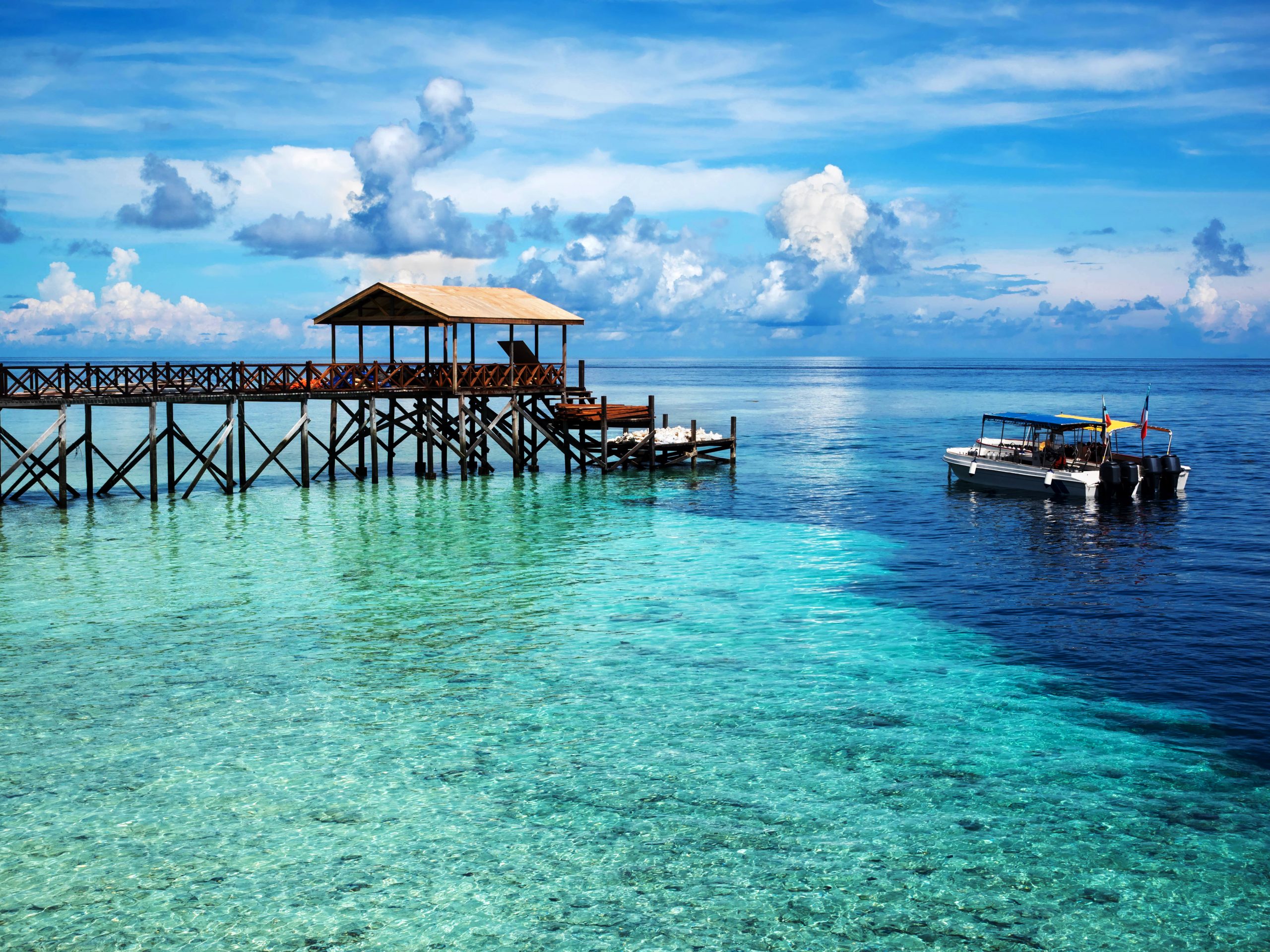
There must be very few in India who are unaware of the multiple charms of Malaysia as a tourism destination. This relatively parvenu nation’s $57 million (Rs.251 crore) media campaign that kicked off nearly two decades ago continues to attract international tourists to its sprawling shopping malls, pristine beaches and ancient remains.
After the country threw open its borders for tourists in April 2022, post long travel restrictions disallowing foreign tourists during the Covid-19 pandemic, Malaysia experienced 10 million footfalls. Tourism is an important sector for this country which earns 102 billion Malaysian ringgit (Rs.1 lakh crore) from toursim.
This southeast Asian country (pop. 33 million) has earned an enviable reputation among high-flyers worldwide as a golfing (thanks to the nearly 200 world-class golf courses across the country) and Formula-racing destination. Malaysia’s ‘truly Asia’ claim, a slogan that has remained unchanged since 1999. Its population comprising ethnic Malays (52 percent), Chinese (22 percent) and Indians (7 percent) live in peace and harmony.
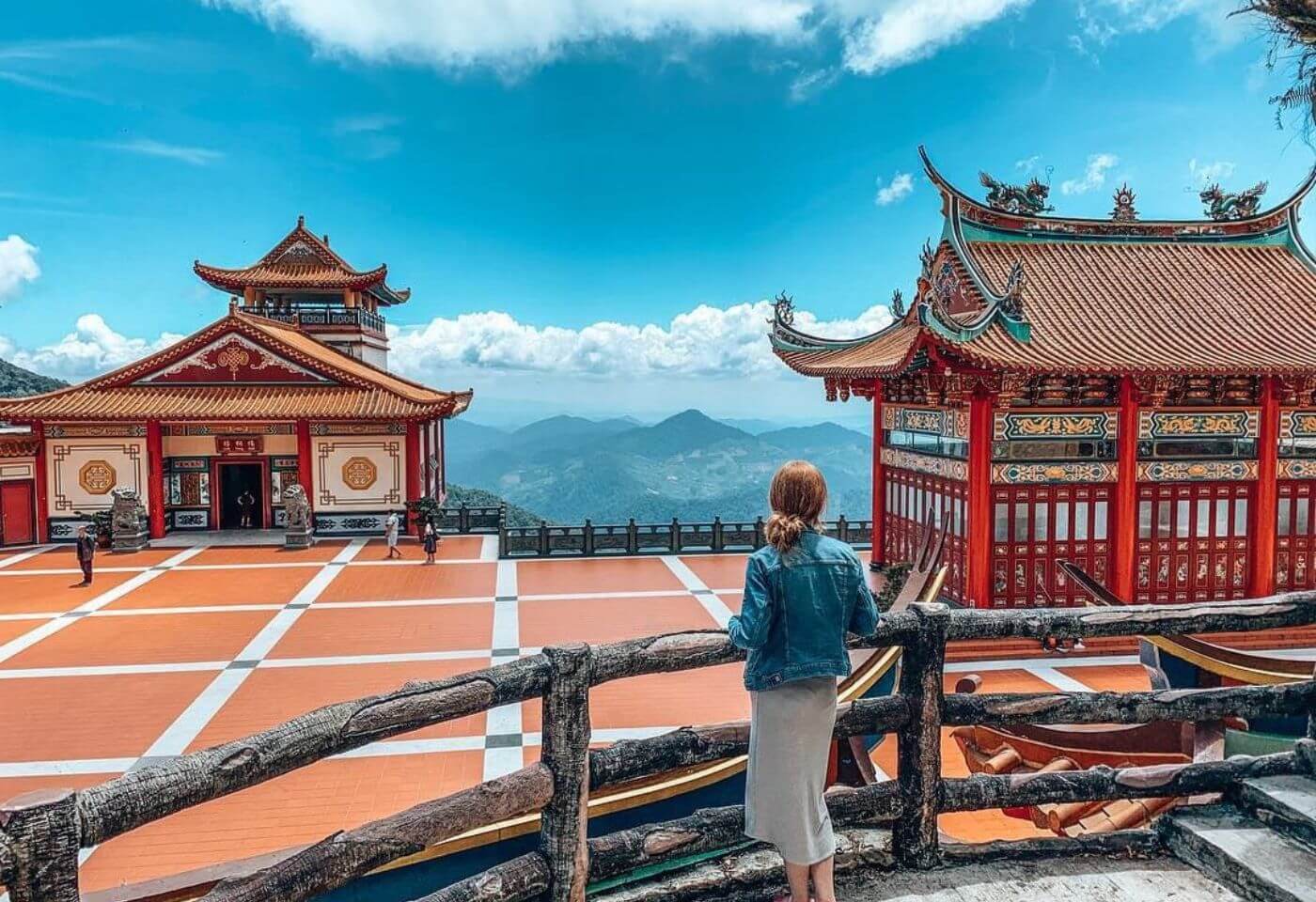 Like most South-east Asian nations Malaysia too experienced an economic crisis in 1997. But under the leadership of its tough, outspoken former prime minister Mahathir bin Mohammed who transformed the nation into an economic powerhouse, it was the first ASEAN country to bounce back.
Like most South-east Asian nations Malaysia too experienced an economic crisis in 1997. But under the leadership of its tough, outspoken former prime minister Mahathir bin Mohammed who transformed the nation into an economic powerhouse, it was the first ASEAN country to bounce back.
It’s hardly surprising that Malaysia’s ‘Truly Asia’ media campaign has struck a resonant chord in middle class India. Two thousand years ago, Indian monarchs ruled this land. In the Bujang Valley, Kedah, one can study the sprawling ruins of an ancient Hindu kingdom dating back to 300 AD. Indian kings are believed to have sailed across the Bay of Bengal to establish kingdoms there.
By the 12th century, the strongest of these kingdoms, Srivijaya was lauded by Chinese, Arab and Indian traders as hosting the best trading port in the region. Soon however, other entrepots emerged and by 1400 AD, the region came to be known as Malacca, with Islam becoming the major religion and the rulers calling themselves sultans.
The first Europeans to discover Malacca were the Portuguese who arrived in 1511. Led by Alfonso de Albuquerque, they sailed into Malacca harbour, opened cannon fire and captured the city. The next to arrive were the Dutch who captured the region in 1641. In the 18th century, the East India Company spread its tentacles as it had done in the Indian subcontinent and subjugated this land absorbing it into the British Empire and Somerset Maugham country of rubber plantations and Planters Punch. The Japanese Imperial Army overran most of the Malaysian peninsula during the Second World War but handed the conquered territories back to Britain following the nuclear bombing of Nagasaki and Hiroshima and the surrender of Japan in 1945.
Malaysia attained its independence a decade after India on August 31, 1957. The government established was a constitutional monarchy where the post of head of state is rotated among the hereditary sultans of its 13 states and federal territories. Over the years, this nation has evolved into a parliamentary democracy with a prime minister as the head of government and one of the sultans as the constitutional head of state.
Singapore was part of the Federation of Malaysia in the 1960s, but it broke off to carve itself a place in the sun in August 1965. To this day, the two countries compete fiercely for foreign investment. Contemporary Malaysia which is fast gaining a reputation for its balmy climate — 32 degrees in summer (March-June) and 21 degrees in winter (October-January) — comprises peninsular Malaysia and the states of Sabah and Sarawak on the island of Borneo.
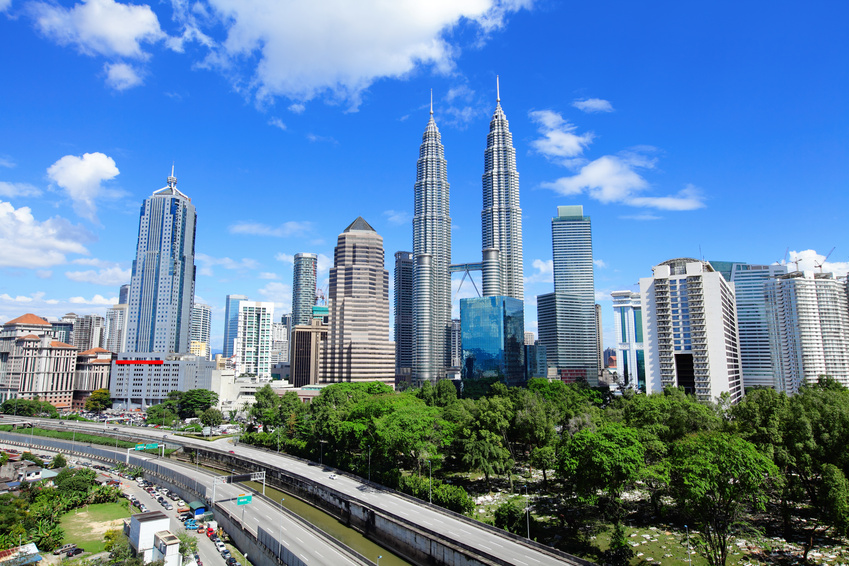 Kuala Lumpur
Kuala Lumpur
Sited midway down the west coast of peninsular Malaysia at the confluence of the Klang and Gombek rivers, KL as it is universally known, is a thoroughly modern city of freeways, soaring flyovers, sprawling parks, plexi-glass and steel skyscrapers, museums, cultural hotspots, botanical and zoological gardens and a splendid, super-efficient metro system that connects the city with Kuala Lumpur International Airport, one of the finest international airports in Asia.
Despite this, KL retains its distinctive character and local flavour which is a distant memory in other boom cities of South-east Asia like Singapore and Hong Kong. Colonial buildings dot the city, with a vibrant Chinatown and a Little India adding to the cosmopolitan mix. The Petronas Twin Towers (1,453 ft), one of the world’s tallest buildings, soar towards the heavens and everywhere, whether in the new federal administrative centre of Putrajaya or the multimedia super-corridor of Cyberjaya, there seems a frenetic development mantra at work.
Watering holes, including globally recognisable hotel chain names abound but are mostly concentrated in the Golden Triangle — the area between Jalan Ampang, Jalan Sultan Ismail and Jalan Bukit Bintang. For visitors, local excursions to Bangsar and Sri Hatamas, the most popular areas with bars, discos, food courts and live music throbbing into the early hours of the morning are mandatory.
In particular Bangsar is a pub lover and epicure’s delight. Indulge in the Irish ambience of Finnegan’s, the Spanish flavour of La Bodega’s or the Cuban flamboyance of Q-ba. There is also a wide variety of food complexes that serve Vietnamese, Malaysian, Chinese, Japanese and Continental fare.
A visit to KL is incomplete without spending a night on Petaling Street, KL’s original Chinatown, where roast duck and other victuals simmer in their juices in hand-drawn carts and tents. Vendors also display and sell gems, incense and toys.
Restaurants. Unlike many cities in South-east Asia, KL offers delectable and authentic Indian food with restaurants like Gajaa at 3 and Betel Leaf being regularly featured in food guides. There’s also SOULed OUT in Sri Hartamas offering Chinese, Malay and Continental fare and the Lotus chain of restaurants which serve satay, roti canai (rotis coated with egg and onions) and nasi goreng, Malaysia’s most popular dish — fried rice tossed with meat, prawns, fried eggs and vegetables.
Accommodation. Top-end: Grand Service Suite at Times Square (Rs.26,655 per night), Excellent Service Suites (Rs.25,558), Banyan Tree (Rs.27,275); Mid-range: Sky residency (Rs.15,960), EQ KL (Rs.13,370), Pavilion Hotel (Rs.10,946); Budget: Hotel Royal (Rs.2,978), Casavilla Hotel (Rs.1,034), Oyo 725 Madras Café (Rs.959).
Excursions
Dewan Filharmonik Petronas. Located on the ground floor of the Petronas Towers, this is a fabulous opera house where the Malaysian Philharmonic Orchestra, the KL Symphony Orchestra and other ensembles, musicians and singers from around the world perform. You can purchase CDs of recordings as well as tickets for the shows.
National Library of Malaysia. Sited in Jln Tun Razak, this blue-roofed building has been inspired by the tengkolok, the traditional Malaysian headgear and songtet, the rich brocaded fabric that goes with it. Set up in 1992 it has a treasure trove of Malay literature and rare manuscripts on display.
Central Market. In the heart of KL, this Art-Deco structure won the Coronation Architecture Design Award in 1953. It is a throbbing centre for the display and development of Malaysian culture. One can learn the art of batik painting or catch the performance of a shadow puppet play.
National Zoo & Aquarium. Thirteen km north east of KL, the zoo showcases exotic species of tropical animals, birds, reptiles and fish.
Genting Highlands. An hour’s drive north of Kuala Lumpur, situated on the border of the Pahang and Selangor states are the awesome Genting Highlands — 12,000 acres of wooded and mountainous terrain converted in 1978 into a Las Vegas-style resort and casino complex. Genting is a must on every tourist itinerary, even if one isn’t inclined to play the tables. It’s a little city in itself with four multistoried hotels offering 2,193 rooms and suites, VIP floors, restaurants, coffee houses, bars, discos, indoor and outdoor swimming pools galore.
Accommodation. There are a wide range of options that could cost as high as Rs.30,000 to as low as Rs.5,000 per night.
Penang
The 1,048 sq km island of Penang, traditionally known as the ‘Pearl of the Orient’, floating off peninsular Malaysia’s north-western coast was one of the first settlements of the British. Though its beaches are touted as a major draw, they suffer in comparison with the golden sands of Goa and Kerala. Yet the unique selling proposition of Penang is the vibrant and intriguing city of Georgetown (pop. 400,000) on the island’s north eastern coast. This city has a greater Chinese flavour than either Singapore or Hong Kong and in its older neighbourhoods, time seems to have stopped in the 1950s.
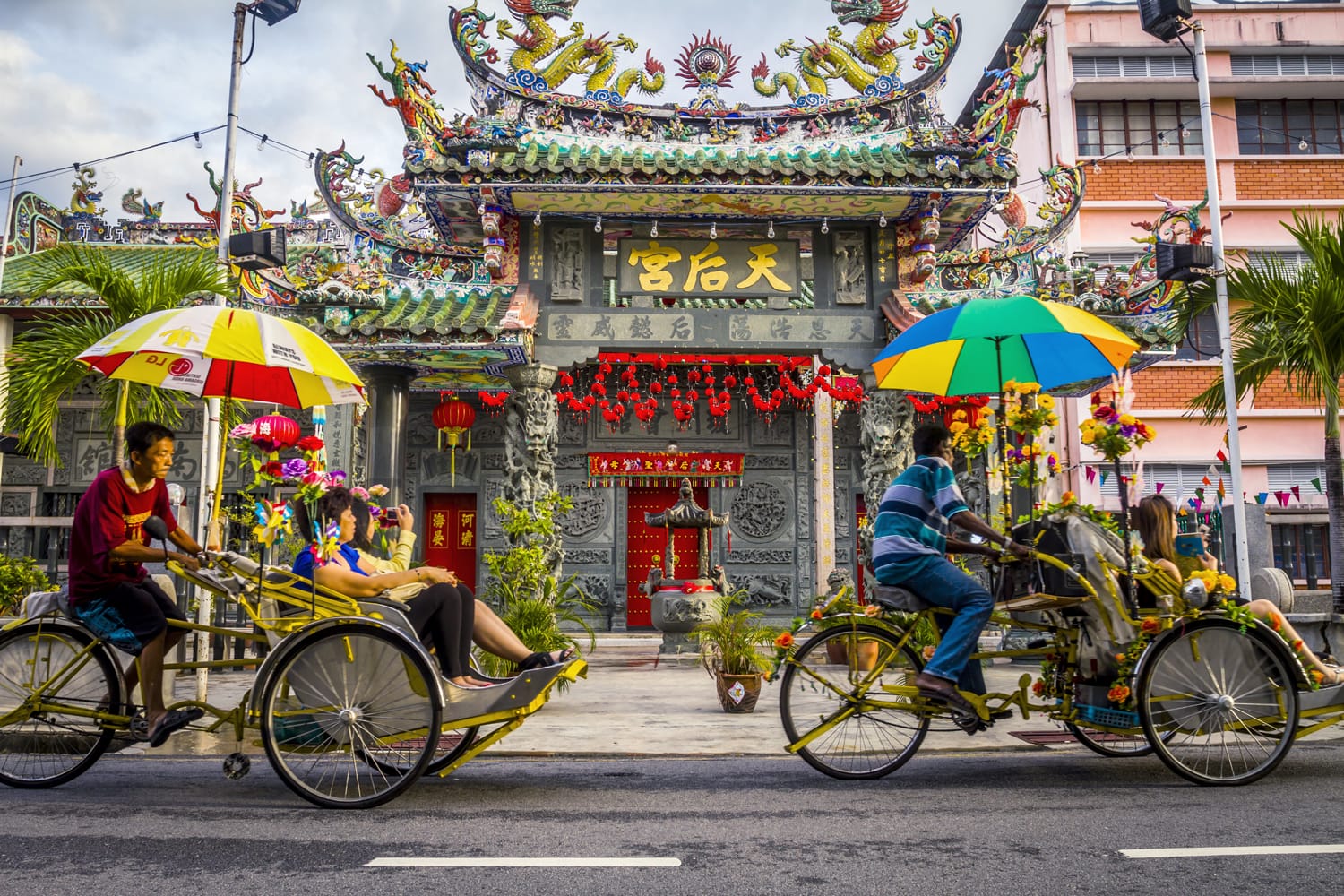 One can gaze at the imposing walls of Fort Cornwallis where the first Briton, Captain Lightfoot set foot in 1786 and established a free port. A huge cannon, Seri Rambai dating back to 1600 graces the park in the courtyard and is famed for its procreative powers. Childless women are encouraged to place flowers in the barrel of ‘the big one’ and offer prayers.
One can gaze at the imposing walls of Fort Cornwallis where the first Briton, Captain Lightfoot set foot in 1786 and established a free port. A huge cannon, Seri Rambai dating back to 1600 graces the park in the courtyard and is famed for its procreative powers. Childless women are encouraged to place flowers in the barrel of ‘the big one’ and offer prayers.
Penang has many kongsis (clan houses) which double as temples and meeting halls. The Khoo Kongsi with its dazzling mix of dragons, paintings, lamps, coloured tiles and carvings is a visual delight. So too is the Kuan Yin Teng temple, where worshippers burn paper money in the furnaces. Also check out the Wat Chaiya Mangkalaram, a Buddhist temple with one of the world’s longest reclining Buddhas.
For the best view of the city, take the funicular railway up Penang Hill (830 m) — a panorama guaranteed to take your breath away.
Accommodation. Top-end: Hard Rock (Rs.33,884 per night), Green Lane 98 (Rs.23,418), Shamrock Beach Villas 9 (Rs.13,000); Mid-range: Yen Keng Hotel (Rs.10,924), Boulder Valley (Rs.8,397), Hotel Jen (Rs.7,462); Budget: Tien Hotel residence (Rs.5,914), Sunway Hotel Georgetown (Rs.3,898), Flamingo By the Beach (Rs.3,462).
Excursions. Penang is an island that parties all day and night. This is a destination designed for party animals with joie de vivre bordering Roman decadence. Money will get you anything here especially in the Pulau Tikus or Rat Isle area north of the island. Upmarket pubs and restaurants are located along Belissa Row. Head out to Songbird Karaoke at 1-Stop Midlands Plaza or check out Cititel Penang’s Crystal KTV Karaoke Lounge in private rooms and sing your heart out with your friends.
The VOR Amphitheatre is a must-go with its cabaret shows featuring lissom dancers and hilarious stand-up comics. It also happens to be the largest dance club on the island with a seating capacity of 1,200 on three levels.
SARAWAK
Sarawak, Malaysia’s largest state is located on the southwestern corner of Borneo. It’s an area of vast primeval rainforests, majestic mountains, unique flora and fauna and diverse ethnic communities. Malaysian Airlines flies daily to the capital Kuching from where one travels by road, river or sea.
A must-see in Sarawak are the Mulu caves located in Mulu National Park. These enormous caverns contain South-east Asia’s largest cave system including the spectacular Sarawak Chamber, the world’s largest. This cave could easily accommodate 40 Boeing 747 aircraft, if you could gather that many for the purpose. The state also boasts the Niah National Park, an area of major archaeological significance, where the oldest human remains of South-east Asia, dating back 40,000 years were found. The caves swarm with millions of bats and swiftlets and witnessing the collection of guano and the harvesting of birds’ nests for the famous soup is a unique experience.
Accommodation. There are a wide range of stay options from high end to budget ones. Top end: Mulu Marriot (Rs.10,400 per night), The Culvert Hotel (Rs.9,682), The Village House (Rs.8,088); Mid-range: The Waterfront Hotel (Rs.7,269), Miri Marriot (Rs. 5,962), Pullman Kuching (Rs.5,775); Budget: Imperial Palace Hotel (Rs.2,307), Mega Hotel (Rs.2,424), The Paramount Hotel (Rs.1,545)
Excursions. Sarawak Museum on Jalan Tun Abang Haji Openg has a mind-boggling collection of Bornean ethno-logical and archeological items. Kuching Skrang river safari. Fabulous four hours of riding the river including the rapids at RM 200-300 (Rs.2,400-3,600).
Sabah
Located in the northeastern tier of the island of Borneo, Sabah is famous for its Mount Kinabalu which soars to a height of 4,095 metres and offers a panoramic view of land and ocean. Sabah means ‘Land Below the Wind’, as it falls within the typhoon belt. It contains one of the world’s largest rainforests inhabited by 31 indigenous tribes including Kadazans, Maruts, Bajaus and Kedayans.
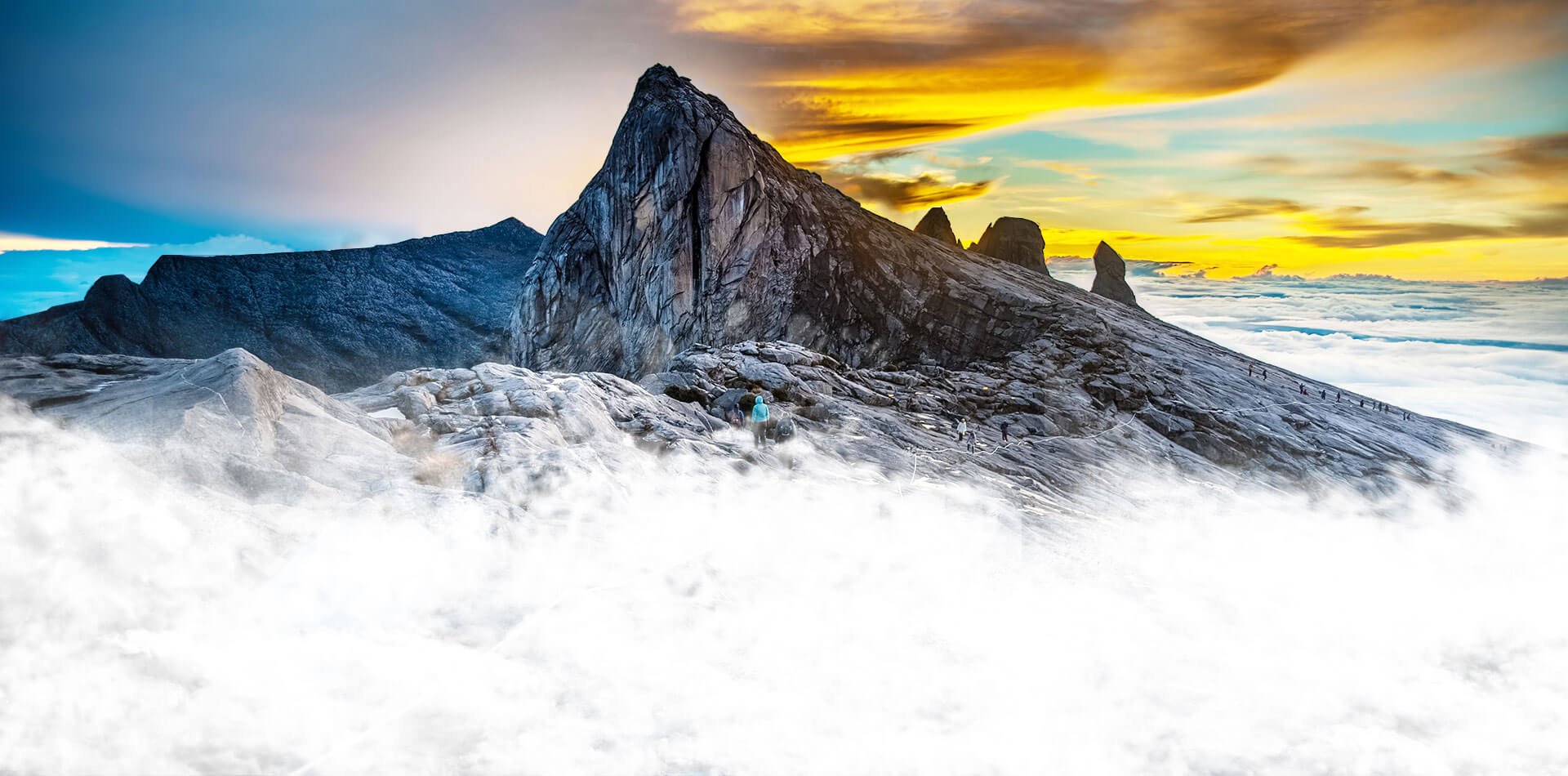 Malaysian Airlines operates regular flights to the capital Kota Kinabalu. If you’re travelling with children, check out the world’s largest Orangutan Rehabilitation Centre located at Sepilok, a 20-minute drive from the town of Sandakan. The people-friendly orangutans are endearing.
Malaysian Airlines operates regular flights to the capital Kota Kinabalu. If you’re travelling with children, check out the world’s largest Orangutan Rehabilitation Centre located at Sepilok, a 20-minute drive from the town of Sandakan. The people-friendly orangutans are endearing.
Further south, in the interior of the state lies the Danum Valley Conservation, a lowland tropical forest endowed with an abundance of flora and fauna including the world’s largest flower, the Rafflesia which measures one metre across and a variety of hornbills, the proboscis monkey and the rare, clouded leopard.
Accommodation. Top-end: Gaya Island Resort (Rs.22,600 per night), Shangri La (Rs.15,735), Sinurambi Bed and Breakfast (Rs.12,531); Mid-range: Sepilok Nature Resort (Rs.8,578), Hiton Kota Kinabalu (Rs.7,421), The Kuma Hotel (Rs. 6,096); Budget: Kinabatangan Wildlife Resort (Rs.4,934), Dragon Pearl Beach Resort (Rs.1,754), Borneo Tree House (Rs.1,314).
Langkawi
Langkawi comprises a group of 99 tropical islands off the north-western coast of peninsular Malaysia. The islands are famed for their intriguing heritage of myths and legends of ogres and gigantic birds, warriors and fairy princesses, battles and romance. As a natural paradise, Langkawi is unmatched in the region.
Access to the islands is by ferry from Kuala Perlis after a seven-hour drive from KL. There are also direct flights from KL, but it’s the road and the ride on waters that creates a sense of adventure.
Accommodation. Top-end: Four Seasons Resort (Rs.30,222 per night), Tujang Rhu Resort (Rs.12,920), Berjaya Beach & Spa Resort (Rs.11,991); Mid-range/budget: Villa Paddy (Rs.5,708), The Ocean Residence (Rs.3,833), Resorts World Langkawi (Rs.3,804).
For more information visit https://www.malaysia.travel























